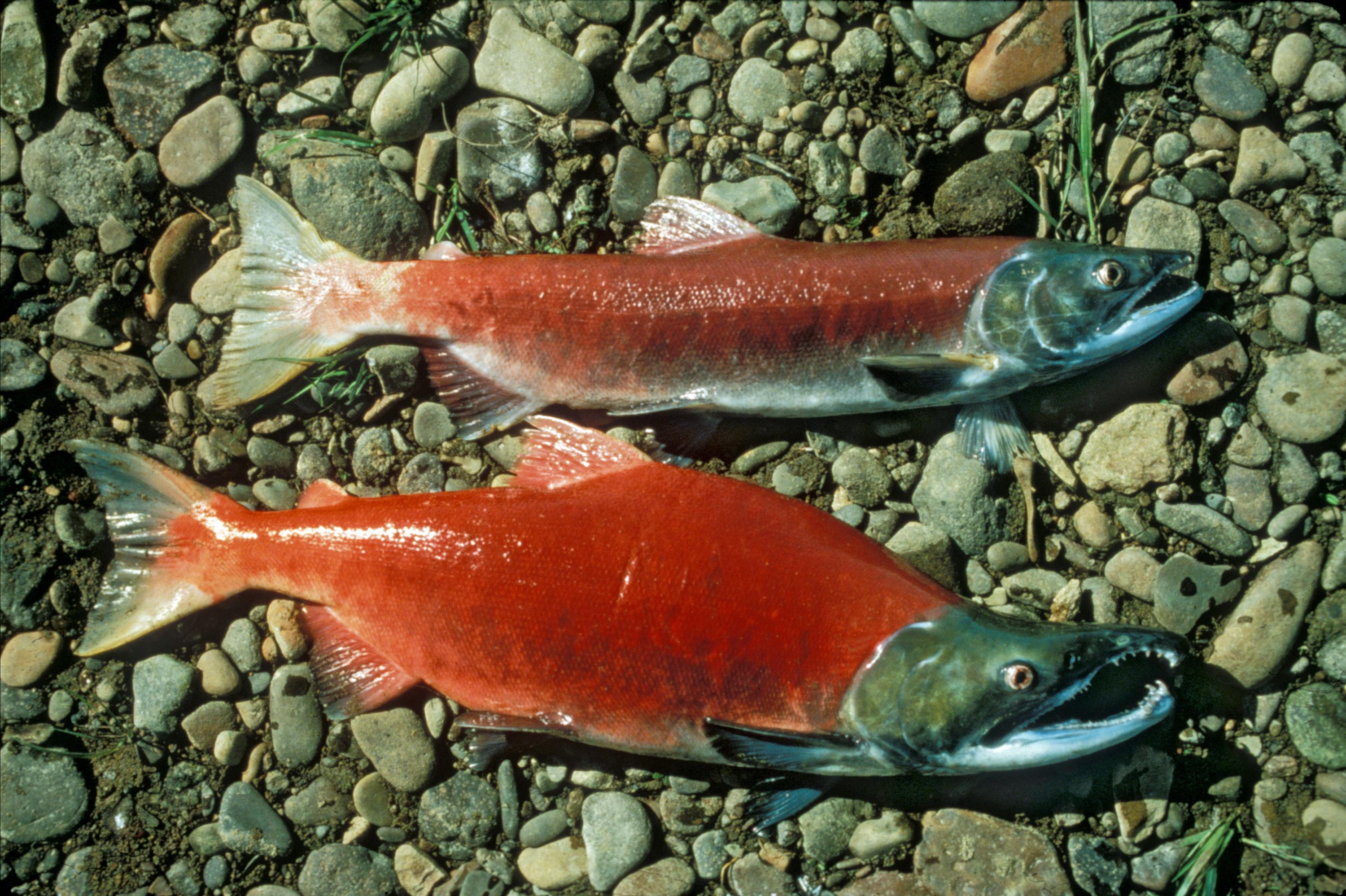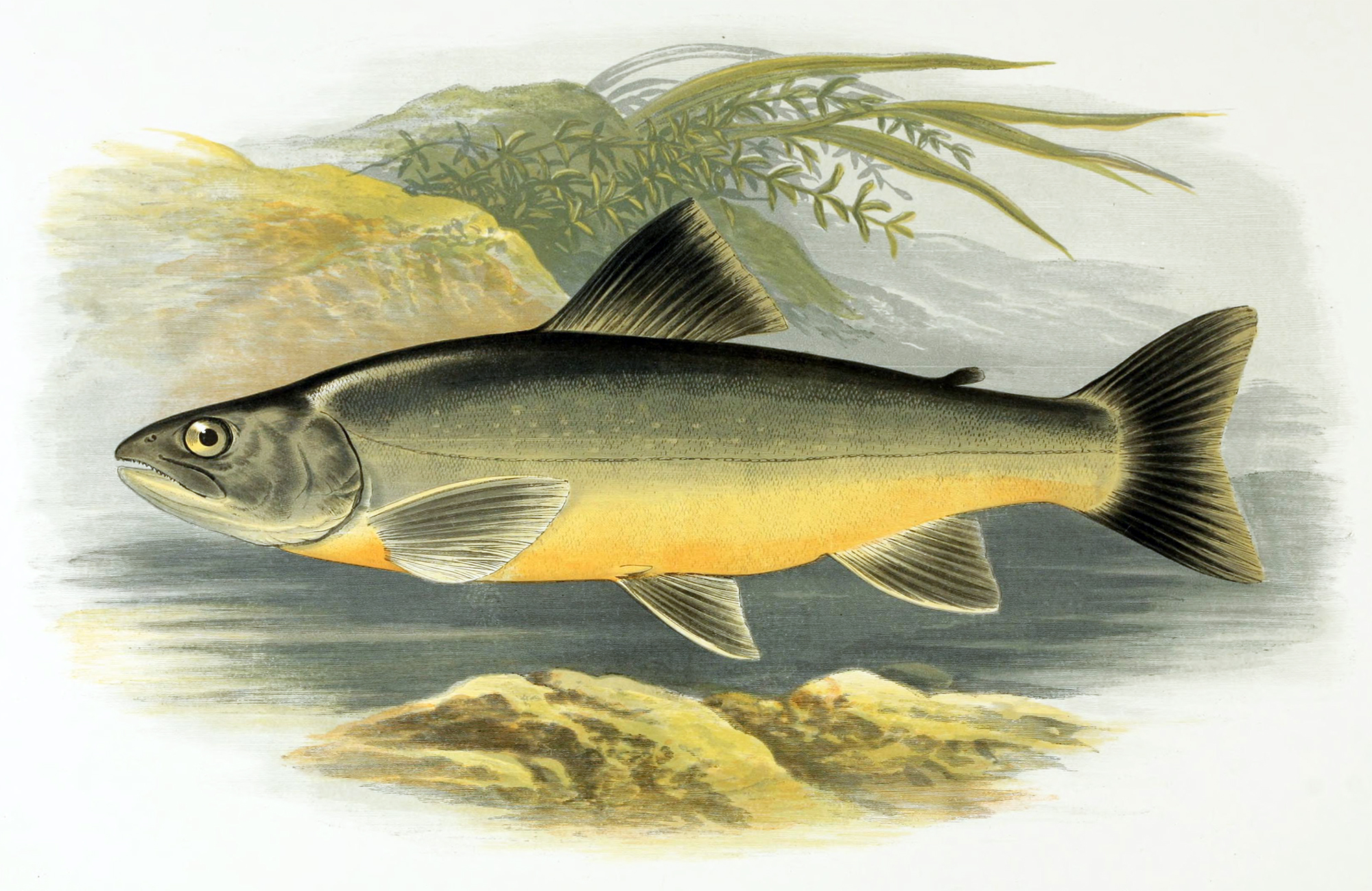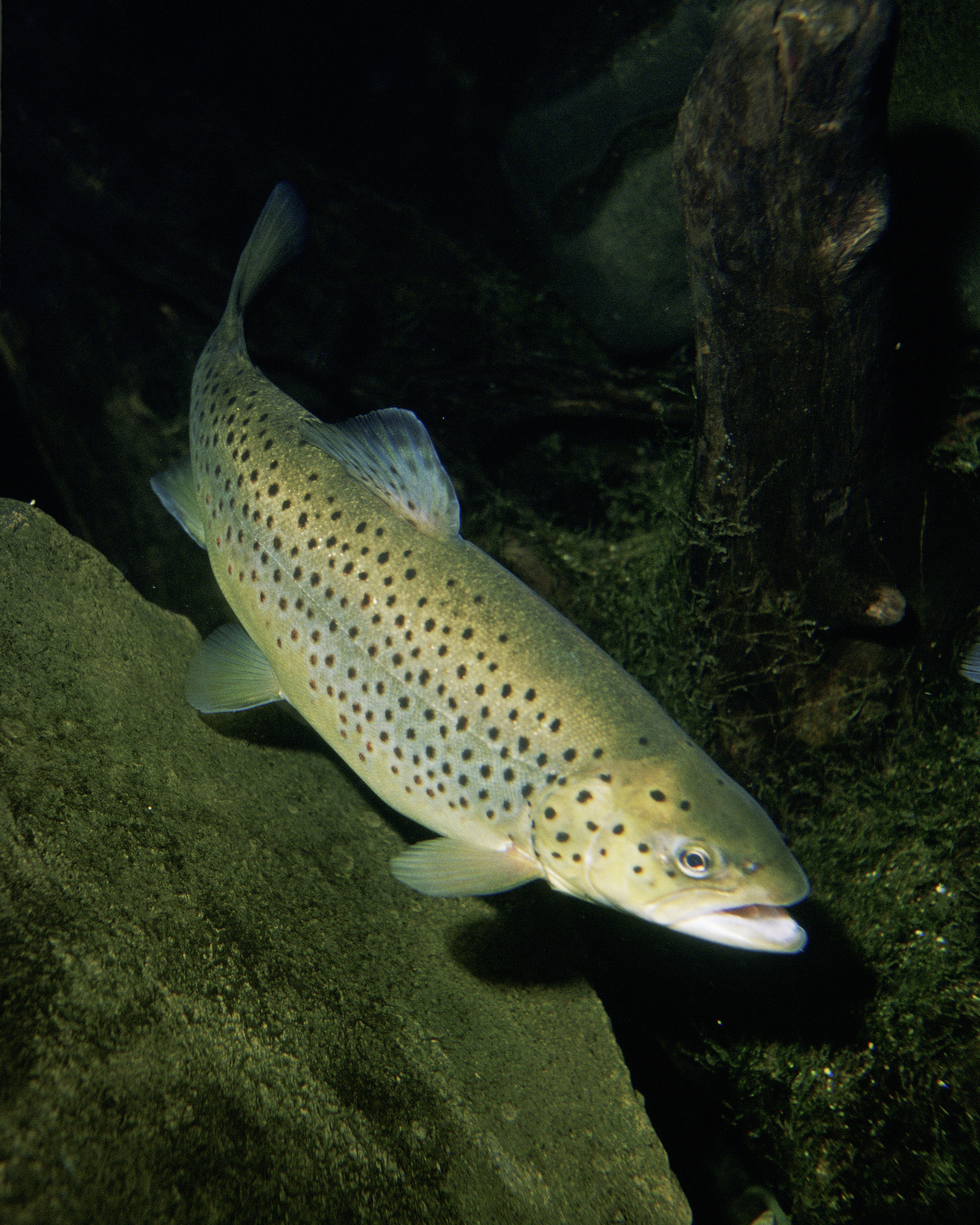|
External Fertilisation
External fertilization is a mode of reproduction in which a male organism's sperm fertilizes a female organism's egg outside of the female's body. It is contrasted with internal fertilization, in which sperm are introduced via insemination and then combine with an egg inside the body of a female organism. In animals, external fertilization typically occurs in water or a moist area to facilitate the movement of sperm to the egg. The release of eggs and sperm into the water is known as spawning. In motile species, spawning females often travel to a suitable location to release their eggs. However, sessile species are less able to move to spawning locations and must release gametes locally. Among vertebrates, external fertilization is most common in amphibians and fish. Invertebrates utilizing external fertilization are mostly benthic, sessile, or both, including animals such as coral, sea anemones, and tube-dwelling polychaetes. Benthic marine plants also reproduce through external ... [...More Info...] [...Related Items...] OR: [Wikipedia] [Google] [Baidu] |
Reproduction
Reproduction (or procreation or breeding) is the biological process by which new individual organisms – "offspring" – are produced from their "parent" or parents. There are two forms of reproduction: Asexual reproduction, asexual and Sexual reproduction, sexual. In asexual reproduction, an organism can reproduce without the involvement of another organism. Asexual reproduction is not limited to unicellular organism, single-celled organisms. The cloning of an organism is a form of asexual reproduction. By asexual reproduction, an organism creates a genetically similar or identical copy of itself. The evolution of sexual reproduction is a major puzzle for biologists. The two-fold cost of sexual reproduction is that only 50% of organisms reproduce and organisms only pass on 50% of their genes.John Maynard Smith ''The Evolution of Sex'' 1978. Sexual reproduction typically requires the sexual interaction of two specialized reproductive cells, called gametes, which contain half t ... [...More Info...] [...Related Items...] OR: [Wikipedia] [Google] [Baidu] |
Frog
A frog is any member of a diverse and largely semiaquatic group of short-bodied, tailless amphibian vertebrates composing the order (biology), order Anura (coming from the Ancient Greek , literally 'without tail'). Frog species with rough skin texture due to wart-like parotoid glands tend to be called toads, but the distinction between frogs and toads is informal and purely cosmetic, not from taxonomy (biology), taxonomy or evolutionary history. Frogs are widely distributed, ranging from the tropics to subarctic regions, but the greatest concentration of species diversity is in tropical rainforest and associated wetlands. They account for around 88% of extant amphibian species, and are one of the five most diverse vertebrate orders. The oldest fossil "proto-frog" ''Triadobatrachus'' is known from the Early Triassic of Madagascar (250Myr, million years ago), but molecular clock, molecular clock dating suggests their divergent evolution, divergence from other amphibians may exte ... [...More Info...] [...Related Items...] OR: [Wikipedia] [Google] [Baidu] |
Semelparous
Semelparity and iteroparity are two contrasting reproductive strategies available to living organisms. A species is considered ''semelparous'' if it is characterized by a single reproduction, reproductive episode before death, and ''iteroparous'' if it is characterized by multiple reproductive cycle, reproductive cycles over the course of its lifetime. ''Iteroparity'' can be further divided into continuous iteroparity (primates, including humans and chimpanzees) and seasonal iteroparity (birds, dogs, etc.) Some Botany, botanists use the parallel terms monocarpy and polycarpy. (See also plietesials.) In truly ''semelparous'' species, death after reproduction is part of an overall strategy that includes putting all available resources into maximizing reproduction, at the expense of future life (see #Trade-offs, § Trade-offs). In any ''iteroparous'' population there will be some individuals who happen to die after their first and before any second reproductive episode, but unless ... [...More Info...] [...Related Items...] OR: [Wikipedia] [Google] [Baidu] |
Micropyle (botany)
In seed plants, the ovule is the structure that gives rise to and contains the female reproductive cells. It consists of three parts: the ''integument'', forming its outer layer, the ''nucellus'' (or remnant of the sporangium, megasporangium), and the female gametophyte (formed from a haploid megaspore) in its center. The female gametophyte — specifically termed a ''megagametophyte'' — is also called the ''embryo sac'' in Flowering plant, angiosperms. The megagametophyte produces an ovum, egg cell for the purpose of fertilization. The ovule is a small structure present in the ovary. It is attached to the placenta by a stalk called a funicle. The funicle provides nourishment to the ovule. On the basis of the relative position of micropyle, body of the ovule, chalaza and funicle, there are six types of ovules. Location within the plant In flowering plants, the ovule is located inside the portion of the flower called the gynoecium. The Ovary (plants), ovary of the gynoecium p ... [...More Info...] [...Related Items...] OR: [Wikipedia] [Google] [Baidu] |
Milt
Milt is the seminal fluid of fish, mollusks, and certain other water-dwelling animals. They reproduce by spraying this fluid which contains the sperm, onto roe (fish eggs). It can also refer to the sperm sacs or testes that contain the semen. Milt (sometimes spelled melt) or soft roe also refers to the male genitalia of fish when they contain sperm, used as food. Many cultures eat milt, often fried, though not usually as a dish by itself. As a food item, milt is farmed year-round in nitrogen tanks, through hormone induction or photoperiod control. Production Production of milt may be affected by external stimuli. Goldfish are known to produce more milt when isolated from other males in their group, but will continue to produce high levels even when exposed to the scent of an unfamiliar male, suggesting that milt production is affected by close contact to rival males. Milt production is also stimulated by the scent of a female fish. Milt itself may contain pheremones that a ... [...More Info...] [...Related Items...] OR: [Wikipedia] [Google] [Baidu] |
Salvelinus
''Salvelinus'' is a genus of Salmonidae, salmonid fish often called char or charr; some species are called "trout". ''Salvelinus'' is a member of the subfamily Salmoninae within the family Salmonidae. The genus has a northern circumpolar distribution, and most of its members are typically cold-water fish that primarily inhabit fresh waters. Many species also migrate to the sea. Most char may be identified by light-cream, pink, or red spots over a darker body. Scales tend to be small, with 115–200 along the lateral line. The pectoral, pelvic, anal, and the lower aspect of caudal fins are trimmed in snow white or cream leading edges. Many members of this genus are popular sport fish, and a few, such as lake trout (''S. namaycush'') and arctic char (''S. alpinus'') are objects of commercial fisheries and/or aquaculture. Occasionally such fish escape and become invasive species. Deepwater char are small species of char living below 80 m in the deep areas of certain lakes. They ar ... [...More Info...] [...Related Items...] OR: [Wikipedia] [Google] [Baidu] |
Trout
Trout (: trout) is a generic common name for numerous species of carnivorous freshwater ray-finned fishes belonging to the genera '' Oncorhynchus'', ''Salmo'' and ''Salvelinus'', all of which are members of the subfamily Salmoninae in the family Salmonidae. The word ''trout'' is also used for some similar-shaped but non-salmonid fish, such as the spotted seatrout/speckled trout (''Cynoscion nebulosus'', which is actually a croaker). Trout are closely related to salmon and have similar migratory life cycles. Most trout are strictly potamodromous, spending their entire lives exclusively in freshwater lakes, rivers and wetlands and migrating upstream to spawn in the shallow gravel beds of smaller headwater creeks. The hatched fry and juvenile trout, known as ''alevin'' and ''parr'', will stay upstream growing for years before migrating down to larger waterbodies as maturing adults. There are some anadromous species of trout, such as the steelhead (a coastal subs ... [...More Info...] [...Related Items...] OR: [Wikipedia] [Google] [Baidu] |
Salmon
Salmon (; : salmon) are any of several list of commercially important fish species, commercially important species of euryhaline ray-finned fish from the genera ''Salmo'' and ''Oncorhynchus'' of the family (biology), family Salmonidae, native to tributary, tributaries of the North Atlantic (''Salmo'') and North Pacific (''Oncorhynchus'') basins. ''Salmon'' is a colloquial or common name used for fish in this group, but is not a scientific name. Other closely related fish in the same family include trout, Salvelinus, char, Thymallus, grayling, Freshwater whitefish, whitefish, lenok and Hucho, taimen, all coldwater fish of the subarctic and cooler temperate regions with some sporadic endorheic populations in Central Asia. Salmon are typically fish migration, anadromous: they hatch in the shallow gravel stream bed, beds of freshwater headstreams and spend their juvenile fish, juvenile years in rivers, lakes and freshwater wetlands, migrate to the ocean as adults and live like sea ... [...More Info...] [...Related Items...] OR: [Wikipedia] [Google] [Baidu] |
Hynobiidae
The Asiatic salamanders (family Hynobiidae) are primitive salamanders found all over Asia, and in European Russia. They are closely related to the giant salamanders (family Cryptobranchidae), with which they form the suborder Cryptobranchoidea. About half of hynobiids currently described are endemic to Japan, but their range also covers parts of China, Russia, Afghanistan and Iran. Hynobiid salamanders practice external fertilization, or spawning. And, unlike other salamander families which reproduce internally, male hynobiids focus on egg sacs rather than females during breeding. The female lays two egg sacs at a time, each containing up to 70 eggs. Parental care is common. A few species have very reduced lungs, or no lungs at all. Larvae can sometimes have reduced external gills if they live in cold and very oxygen-rich water. Fossils of hynobiids are known from the Miocene to the present in Asia and Eastern Europe, though fossils of Cryptobranchoids more closely related to ... [...More Info...] [...Related Items...] OR: [Wikipedia] [Google] [Baidu] |
Sirenidae
Sirenidae, the sirens, are a family of neotenic aquatic salamanders. Family members have very small fore limbs, and lack hind limbs altogether. In one species, the skeleton in their fore limbs is made of only cartilage. In contrast to most other salamanders, they have external gills bunched together on the neck in both larval and adult states. Sirens are found only in the Southeastern United States and northern Mexico. Although they are primarily carnivorous, they are the only salamanders observed eating plant material.Hill, R. L., Mendelson, J. R. & Stabile, J. L. 2015. Direct observation and review of herbivory in Sirenidae (Amphibia: Caudata). Southeastern Naturalist 14, N5-N9. Description Sirens are quite distinct from other salamanders, and in some classifications they form their own suborder, Sirenoidea, or as a completely distinct order (Meantes or Trachystomata). Genetic analysis variously places them as the sister to other Salamandroidea or as sister to all other salam ... [...More Info...] [...Related Items...] OR: [Wikipedia] [Google] [Baidu] |
Cryptobranchidae
The Cryptobranchidae (commonly known as giant salamanders) are a family of large salamanders that are fully aquatic. The family includes some of the largest living amphibians. They are native to China, Japan, and the eastern United States. Giant salamanders constitute one of two living families—the other being the Asiatic salamanders belonging to the family Hynobiidae—within the Cryptobranchoidea, one of two main divisions of living salamanders. The largest species are in the genus ''Andrias'', native to east Asia. The South China giant salamander (''Andrias sligoi'') can reach a length of .Andrias davidianus AmphibiaWeb: Information on amphibian biology and conservation. 2012. Berkeley, California: AmphibiaWeb. Retrieved 13 December 2012. The < ... [...More Info...] [...Related Items...] OR: [Wikipedia] [Google] [Baidu] |







